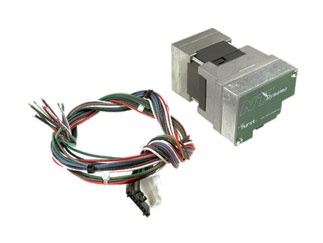

Microchip E-Scooter Reference Design
A unique design to handle the demand for micro-mobility
A pre-built solution, Microchip’s E-Scooter Reference Design is packed with a comprehensive hardware and software platform that simplifies the design process and enables manufacturers to bring their own electric scooter products to market quickly.
The reference design includes a range of features and components that are optimized for electric scooter applications:
- dsPIC33CK64MP105 DSC motor controller
- Demonstration software that uses Hall sensors for high-torque start-up and uses Field-Oriented Control (FOC) for high efficiency
- Debugger/programmer interface for connecting an MPLAB® PICkit 4 debugger/programmer, MPLAB ICD 4 debugger/programmer or other programming tools in the MPLAB development ecosystem
- Feedback circuits support both Hall sensors and sensorless motor control algorithms (BEMF and FOC)
- Three-phase inverter stage
- Three MPC4104 half-bridge MOSFET gate drivers
- Six n-channel MOSFETs with low RDS(on) (typical 1.9 mΩ )
- Pulse-Width Modulation (PWM) switching frequency range from 8–50 kHz (typical 20 kHz—above the audible range)
- Three low-side shunt resistors on each inverter phase for current measurement (2 mΩ)
- 350W maximum output power
- 20A RMS (continuous) and up to 27A RMS (momentary) motor phase current
- FASTON connectors to motor
- 18–42V VBUS input voltage range (up to 10s battery pack)
- XT30-type connector for battery pack
- System bias generation using the MCP16331 (12V), MCP1754S (5V) and MCP1754S (3.3V)
- Temperature measurement support (NTC thermistor)
- Auxiliary connector for other functions such as throttle input, voltage monitoring, I2C, UART, Bluetooth®, and more
Here is a diagram of the e-scooter reference design:

Software
Microchip’s software stack for this e-scooter design includes motor control algorithms, battery management, and communication protocols for wireless connectivity and more. It is also highly customizable.
In addition to the hardware and software, Microchip also provides a range of development tools and documentation to help manufacturers get started with the design process. This includes schematics, layout files, bill of materials, and application notes. Log in to your myMicrochip account to access those key tools.


